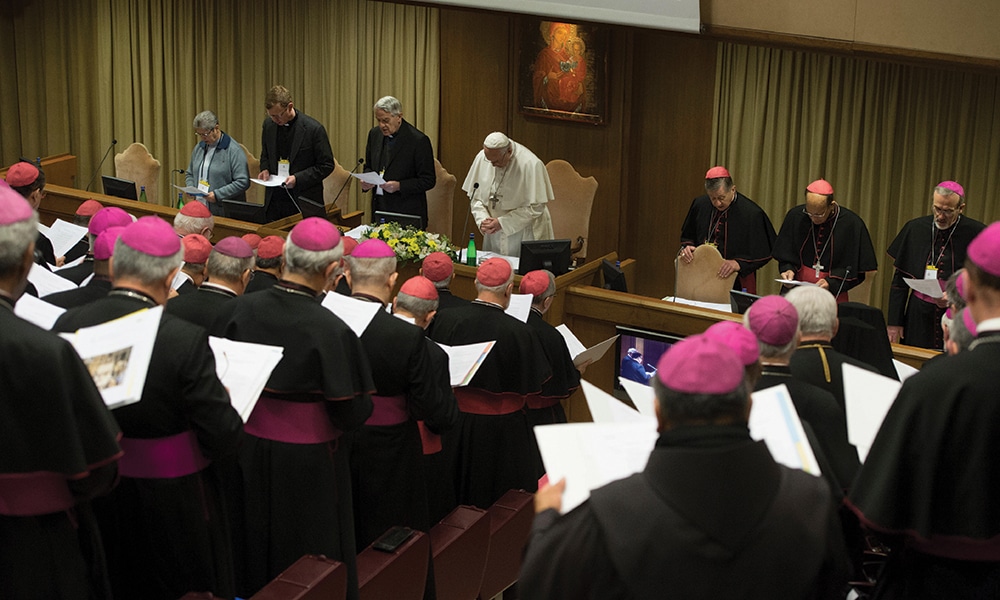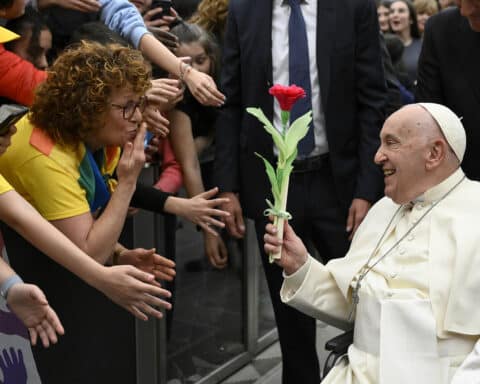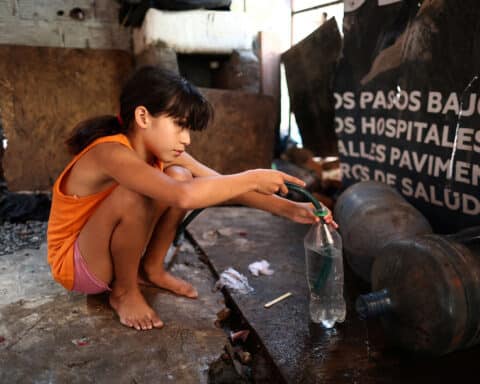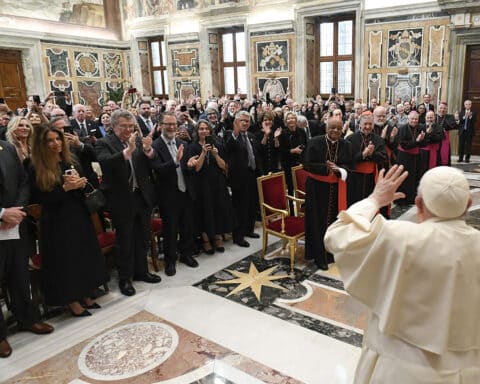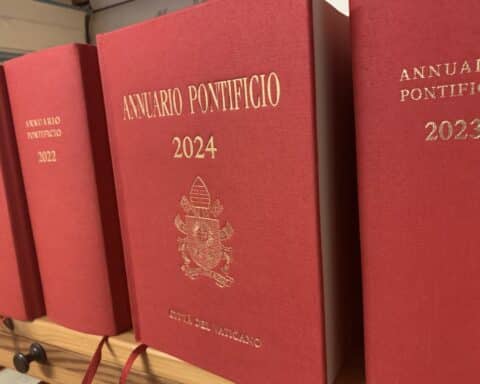The Vatican summit on clergy sex abuse repeatedly has been called a turning point. But taking that assessment as a statement of fact, it’s reasonable to ask: turning to what?
In his talk after the gathering’s closing Mass, Pope Francis said the summit made it clear beyond a shadow of doubt that the sexual abuse of children is “a universal problem, present almost everywhere and affecting everyone,” and it’s “all the more grave and scandalous in the Church.”
Undoubtedly the high-level gathering did serve the purpose of heightening awareness among a select group of Church leaders from around the world that the abuse of children by Catholic priests in particular is a heinous crime and motivating them to deal with it if they are not already doing so. But some critics complained the summit came up short on identifying concrete steps to take, although the Vatican said more would be coming later.
At the same time, the discussion left unanswered the fundamental question of what causes some priests to abuse — and what role, if any, homosexuality plays in it. The days immediately before the Feb. 21-24 summit saw several well-publicized developments that unavoidably focused attention on this matter.
These included the Vatican’s removal of ex-cardinal Theodore McCarrick from the priesthood for sexual misconduct, the disclosure that the papal nuncio to France was under investigation for allegedly sexually assaulting a young man, and the international publication of a scandal-mongering book by a homosexual French journalist claiming that a large percentage of Vatican clerics are gay.
But even as sex abuse survivors demonstrated and gave media interviews outside the Vatican, the summit went on as scheduled.
21-point checklist
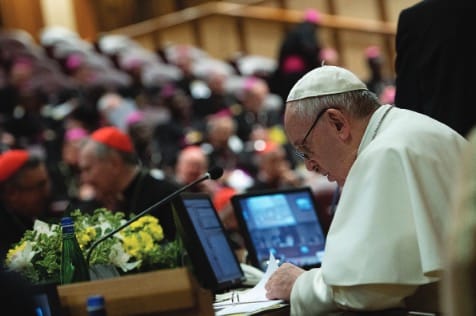
With Francis present at all sessions, the gathering was attended by 190 prominent churchmen, including the presidents of 114 national bishops’ conferences, the heads of the Eastern Catholic churches, top Vatican officials, representatives of the international organizations of men’s and women’s religious orders, and others. Several sex abuse survivors presented testimonies to the assembled prelates via prerecorded messages.
Present from the United States were Cardinals Daniel DiNardo of Galveston-Houston, president of the U.S. Conference of Catholic Bishops, Blase Cupich of Chicago, one of the assembly’s planners, Sean O’Malley of Boston, head the Vatican commission on child protection, and Kevin Farrell, prefect of the Vatican office on marriage and family, as well as Ruthenian Metropolitan Archbishop William Skurla of Pittsburgh.
Pope Francis in his opening remarks called on the assembled cardinals and bishops to “be concrete” and gave them a 21-point checklist for dealing with the problem. Even so, the meeting’s principal aim was not to produce a detailed action plan for local churches but to provide leading churchmen from many countries and cultures with an overview of clergy abuse as background for steps in their own locales.
Unfinished business
In the United States, the bishops have been wrestling at the national level with this issue for well over two decades. Since 2002 the Church in the U.S. has had in place a comprehensive program including mandatory child protection measures in dioceses, parishes and Catholic schools, as well as compensation and pastoral care for survivors.
An important element of this system is the “zero tolerance” policy under which priests credibly accused of abuse are removed from ministry. Here, it seems, the American bishops and the Vatican disagree, since the Vatican prefers a case-by-case approach. But whether as a result of zero tolerance or for some other reason, the incidence of child abuse in U.S. Catholic institutions has fallen dramatically in recent years.
There is, however, unfinished business for the American Church, especially the creation of a process for investigating bishops who are accused of having either engaged in abuse themselves or hushed up abuse by their priests.
Last November, as the U.S. Conference of Catholic Bishops, meeting in Baltimore, was preparing to vote on such a plan, the Vatican intervened at the last minute and told the bishops not to act until after the Rome summit. Now, presumably, Americans will move ahead on a system of episcopal accountability when they meet again in June.
At the summit, Cardinal Cupich outlined a plan that would make the Metropolitan archbishop in each ecclesiastical province responsible for investigating an accused bishop with the help of lay experts, while reserving the final decision on an offending bishop to the pope. The strength of this approach — which some would say is its weakness — lies in its unspoken premise that an erring bishop is accountable to his fellow bishops and ultimately to the pope, but not to the Church at large.
More than clericalism
In the wake of the Vatican gathering, however, the biggest question may be what causes some priests to abuse. For Pope Francis, the answer is clericalism: Abusers are engaging, in the words of his closing remarks, in “an abuse of power” arising from the unhealthy dynamics of a clerical culture gone awry.
But most men who abuse children are not clerics, have no connection with clerical culture and can hardly be said to be products of clericalism. In the case of abusive priests, clericalism may well be an enabler of their crimes, but it can hardly be the cause.
An alternative explanation is that the rise of abuse reflects a rise in homosexuality in the priesthood. Last year, Father Paul Sullins, an emeritus professor of sociology at The Catholic University of America, analyzed the data and published a study concluding that a sharp rise in the percentage of homosexual priests from the 1950s to the ’80s was “strongly correlated with” increasing child abuse.
Among those presenting papers at the summit, the one who came closest to this was Cardinal Oswald Gracias of Mumbai, India, who put “psychopathology” and “sinful moral decisions” first among causes. But the summit participants and the rest of the Church were left to ponder the pope’s closing words that it is up to the “People of God” to “liberate us from the plague of clericalism.”
Russell Shaw is an OSV contributing editor.

